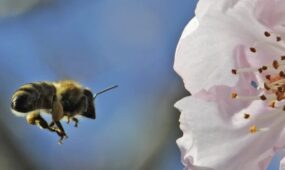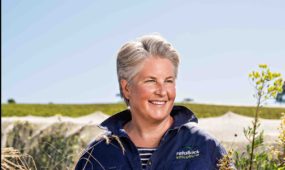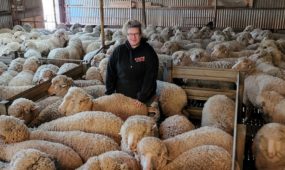Manuka plantation sets new direction for commercial forest
Primary Industries
The first trees have been planted in a project seeking to spark a new wave of commercial activity at the birthplace of Australia’s forest industry.

Sign up to receive notifications about new stories in this category.
Thank you for subscribing to story notifications.
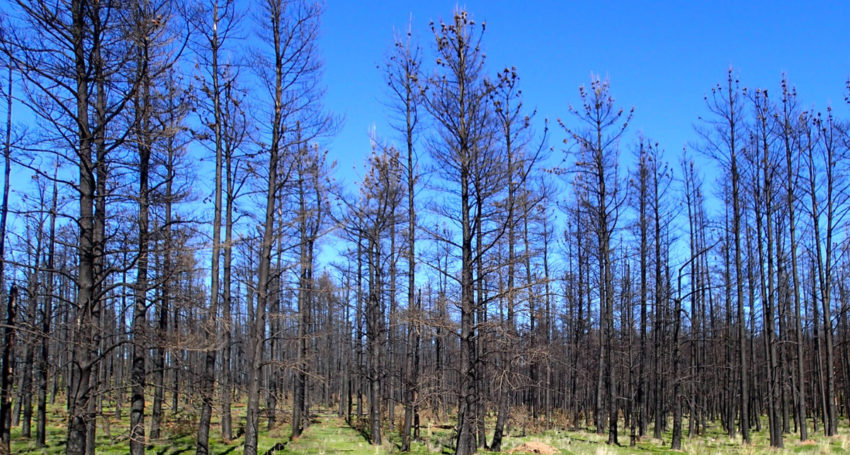
More than 2200 hectares – about 80 per cent – of commercial eucalypt and pine plantations were destroyed during bushfires at Wirrabara and Bundaleer Forests in South Australia, forcing the state government to reconsider their future.
Rather than starting again with the pine and Eucalypt trees that have been grown there for almost 150 years, Forestry SA has entered into a partnership with the primary industries department (PIRSA) and food company Spring Gully Foods to plant more than 1000 Leptospermum scoparium (manuka) shrubs.
The trial planting took place last month and could be producing manuka honey in about two years. There are plans to double the plantings across a 10ha section of Wirrabara State Forest during the three-year trial.
Manuka honey has been produced in New Zealand and some Australian states for many years but it has only been in the past five years or so that its prized bioactive properties have begun to be understood, causing demand and prices to skyrocket.
The global manuka honey market was valued at US$660 million in 2017 and is expected to reach $2.1 billion by 2025. High-grade manuka honey sells for more than US$400 per kilogram. Prices are expected to further increase as demand continues to outpace increases in supply.
Spring Gully Foods Managing Director Kevin Webb said the “exciting proposal” was put to the South Australian government by his company in 2015 as a way to reimagine a commercial future in a traditional plantation setting.
“To replant eucalypt or pine would mean it would be 30 years until harvest whereas we’ve got a much quicker turnaround in an industry that could grow and develop in the region,” he said.
“Manuka is a fast growing plant so we’ll be able to collect nectar from next year for testing and move some bees into that site so we can produce some honey for testing as well.
“This is a trial to see how it will grow in a plantation arrangement in South Australian conditions and the plan will be – if it is viable – to roll out to larger acreages.”
The Bundaleer and Wirrabara Forest Reserves are about 40km apart and 200km north of Adelaide, the South Australian capital. They were established in 1875 and are widely regarded as the birthplace of Australia’s forestry industry.
Other commercial projects identified in the Mid North Forests Future Strategy include bio-char production for soil enrichment, boutique tourism, horticulture, livestock production and private commercial forestry.
More than 3500ha of land in Wirrabara Forest has also been transferred from Forestry SA to the state’s park system to enable greater public access.
Dozens of Leptospermum species, more commonly known as tea tree, grow throughout Australia. However, the manuka species Leptospermum scoparium is not native to South Australia. This highlights the importance of the trial to assess its suitability to the Mid North of the state where rainfall is typically less than in areas where Manuka grows naturally such as Tasmania and Victoria.
“We’ve been very focused on doing research rather than just throwing plants in the ground – we’ve already done a 12-month project with the University of Adelaide and we believe that research is the way forward to enable this to be produced in South Australia,” Webb said.
“Obviously there are economic and commercial benefits for us but we want to develop an industry that can produce a product that can also be sold into the medical and cosmetic industries.”
University of Adelaide researcher Dr Kate Delaporte has worked on projects with PIRSA and Spring Gully Foods since 2015 with a view to potentially developing a Manuka honey industry in South Australia.
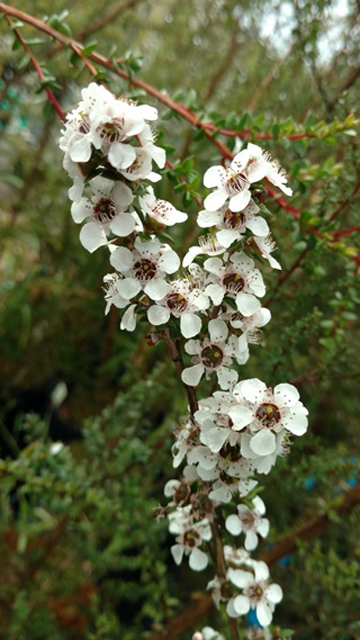
Manuka flowers contain a chemical that converts into a sort after compound found in bioactive honey.
The university has some of its own plants growing at the Wirrabara trial site and also at its Waite Campus in Adelaide.
“As more people begin to understand what really good manuka honey is, there will continue to be high demand,” Dr Delaporte said.
“The state’s gearing up to be part of the potentially lucrative manuka honey industry and it’s being done in a really intelligent way.
“People can go out and just plant (Leptospermum) scoparium but it could be an expensive mistake if it’s not done right so we need to gather really good information to build a strong industry and we’re in the process of doing that.”
There are five different watering regimes for the manuka shrubs at the Wirrabara site: one that only receives natural rainfall and four different irrigation programs.
Dr Delaporte said a weather station would soon be established at the site to monitor natural rainfall, to provide a true understanding of the Wirrabara site conditions.
The chemical compound dihydroxyacetone (DHA) is present in the nectar of manuka flowers and converts into the bioactive compound methylglyoxal (MGO) in the natural honey-making process. This conversion continues until the honey has been aged for up to two years.
MGO levels in manuka honey range from almost zero to more than 1000 milligrams per kilogram of honey. Honey with an MGO greater than 263mg/kg is considered the minimum for therapeutic use. Higher grade Manuka honey can be used to treat wounds and is also believed to soothe a sore throat, improve digestive symptoms and help prevent gastric ulcers. Lower grade Manuka honey can be eaten as per non-bioactive honey.
Dr Delaporte said oil could be commercially extracted from the manuka leaves and the timber could also be sold for firewood when the trees reached the end of their lifecycle.
She said research at the University of Adelaide through the CRC for Honey Bee Products was also underway to see if local South Australian Leptospermum species could be planted to produce high quality bioactive honey in the future.
“We’re looking at local species and comparing them to Leptospermum scoparium in a number of different growing regions. We want to see how they respond to different environments, and how each environment impacts on the nectar production – it’s all about how much nectar you can get from each plant to be made into honey.
“We need to find plants that can withstand lower rainfall and do really well in our environment and I believe we can do that, it’s just going to take a bit of time and we’ve got the perfect opportunity.”
South Australian Minister for Primary Industries and Regional Development Tim Whetstone said the Manuka project was a great example of exploring business and land use diversification in the region.
“Manuka is a fast growing plant … after its useful life producing honey, manuka timber can be harvested as a speciality firewood,” he said.
“The potential of this project is exciting, and could be the start of a unique new industry for the region.
“With this comes the positive economic impact and the creation of jobs as the opportunities are realised for any future manuka production.”
Jump to next article

